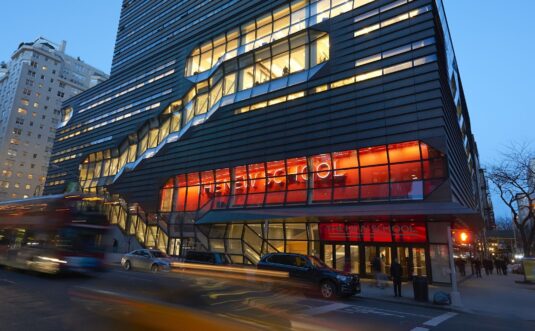Fashion production is a complex and multi-faceted process that transforms creative ideas into tangible garments. From the initial design concept to the final finished product, fashion production encompasses numerous stages that require meticulous attention to detail and collaboration among various stakeholders. Understanding the intricacies of this process is essential for anyone aspiring to be a part of the fashion industry.
In this article, we will provide a comprehensive overview of fashion production, taking you through each stage involved in bringing a fashion design to life. From the inception of an idea to the manufacturing of the final garment, we will explore the key steps that fashion designers, pattern-makers, and manufacturers undertake to create the clothing we wear.
By gaining insight into the fashion production process, you will develop a deeper appreciation for the craftsmanship and expertise required to deliver high-quality garments. So, let’s embark on this journey and unravel the intricacies of fashion production, step by step.
Design and Concept Development
The fashion production process begins with the initial design and concept development phase. This stage is crucial as it sets the creative direction for the entire collection. Fashion designers draw inspiration from various sources such as art, culture, nature, and current trends. They create sketches, mood boards, and fabric swatches to visually communicate their ideas.

During this phase, designers also consider market trends, target audience preferences, and brand identity. They conduct research to understand consumer demands and competitor offerings, ensuring their designs are commercially viable.
Once the design concepts are finalized, designers move on to creating technical drawings that provide detailed specifications for pattern-making and garment construction. These technical drawings include information on measurements, seam placements, and other critical details.
Designers often collaborate with pattern-makers, sample-makers, and manufacturers to translate their vision into tangible prototypes. This collaborative process involves multiple iterations, with constant communication and adjustments to ensure the design’s integrity is maintained throughout the development process.
Pattern-Making and Sample Development
Pattern-making is a vital stage in fashion production, where paper or digital templates are created based on the designer’s technical drawings. Pattern-makers use mathematical calculations, garment measurements, and draping techniques to draft precise patterns that serve as the foundation for garment construction.
Patterns are created for each garment component, including sleeves, bodices, skirts, and collars. They ensure proper fit, proportion, and functionality of the garment. Pattern-makers meticulously adjust and refine patterns until they achieve the desired shape and structure.

Once the patterns are finalized, samples are created to test the design’s feasibility and fit. Sample-makers bring the patterns to life by cutting fabric, sewing the pieces together, and adding necessary trims and finishes. These samples serve as prototypes for further evaluation and modifications.
During the sample development stage, designers and manufacturers assess the garment’s aesthetics, fit, and comfort. They make necessary adjustments to the patterns and construction techniques to ensure the design’s integrity is maintained while addressing any issues that arise.
Sampling is an iterative process, with multiple rounds of adjustments and refinements. The goal is to achieve a sample that meets the designer’s vision and quality standards. Once the final sample is approved, it serves as a reference for mass production.
Manufacturing and Quality Control
After the design and sample development stages, the fashion production process moves into mass manufacturing. Garment manufacturers source the necessary materials, including fabric, trims, and hardware, to commence production.
The production process begins with fabric cutting, where layers of fabric are precisely cut according to the approved patterns. The cut fabric pieces then move to the sewing department, where skilled garment workers stitch them together, following the established construction techniques and guidelines.
Throughout the manufacturing process, quality control measures are implemented to ensure that each garment meets the desired standards. Quality control inspectors examine the garments at various stages, checking for accurate stitching, proper alignment of patterns, and overall craftsmanship. They also assess the garments for any defects or inconsistencies, ensuring that only high-quality products reach the market.
Once the garments are sewn, they undergo a series of finishing processes, including pressing, hemming, and attaching buttons or zippers. These final touches add polish and refinement to the garments, preparing them for packaging and distribution.
It is worth noting that sustainability and ethical considerations are increasingly important in fashion production. Many manufacturers are adopting eco-friendly practices, such as using organic or recycled materials, minimizing waste, and ensuring fair labor practices throughout the supply chain. These initiatives contribute to a more sustainable and responsible fashion industry.
Conclusion
Fashion production is a collaborative and intricate process that transforms creative ideas into tangible garments. From design and concept development to pattern-making, sample development, manufacturing, and quality control, each stage requires precision, expertise, and attention to detail.
Understanding the fashion production process provides valuable insight into the craftsmanship and dedication required to bring fashion designs to life. It also highlights the importance of sustainable and ethical practices within the industry.
By gaining a comprehensive overview of fashion production, we develop a deeper appreciation for the garments we wear and the individuals behind their creation.
Whether we are fashion enthusiasts, aspiring designers, or industry professionals, recognizing the effort and expertise that goes into fashion production allows us to support and celebrate the artistry and craftsmanship within the fashion industry.




